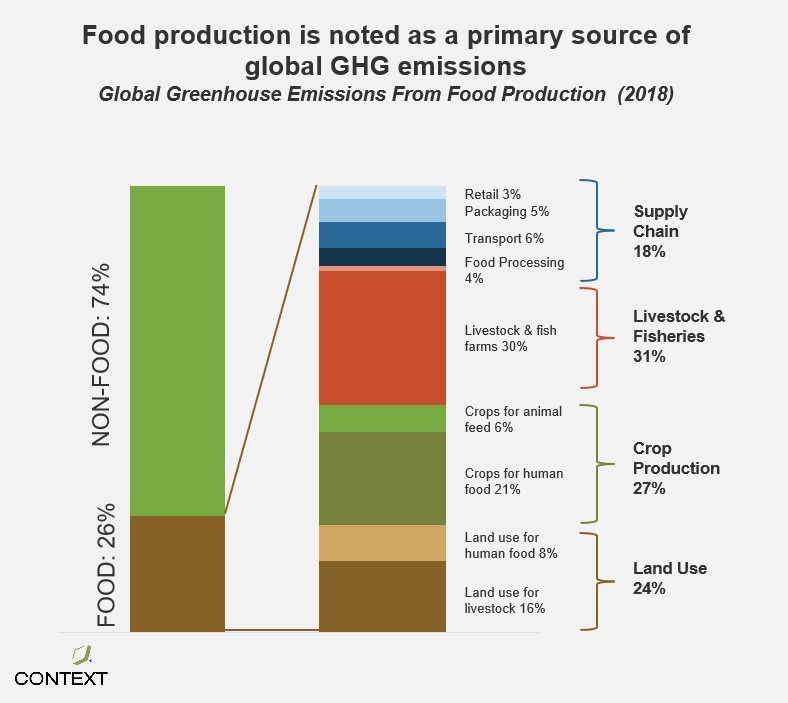What Is Agriculture’s Role in Global Greenhouse Gas Emissions?
Content has been adapted from The Context Network “Get Smart, Stay Smart” Ag Carbon Service.
The short answer: Agriculture is often cited as a primary source of greenhouse gas (GHG) emissions, but crop production and land use account for just over 13% of food-related GHG emissions globally. Altogether, food production in every stage accounts for 26% of global GHG emissions.

Figure provided by The Context Network, LLC.
Back it up: What do we mean when we talk about greenhouse gases? According to research conducted by the Context Network, LLC, based on data from the Environmental Protection Agency (EPA) and Our World in Data:
- Global GHG emissions take stock of carbon dioxide (CO2), methane, nitrous oxide, and fluorinated gases.
- These four primary gases are monitored as climate change indicators, and tracking and decreasing GHG emissions is a major goal for industry, government, and individuals worldwide.
- Carbon is a major focus, since it accounts for such a large chunk of global emissions. But nitrous oxide—which is produced when microbes digest nitrogen in the soil—is 300 times more potent a greenhouse gas than carbon dioxide.
- Methane is another GHG by-product of agricultural production, with manure and enteric emissions (read: cow farts) as its major source.
- Finally, farms produce emissions as they use energy to operate livestock and farming equipment.

Figure provided by The Context Network, LLC.
The big picture: Within the quarter of global GHG emissions from food production, the breakdown looks like this:
- 21% of emissions are generated in producing crops for humans to eat;
- 16% come from land use for livestock;
- 8% from land use for human food production;
- And 6% of emissions are generated in producing crops for animal feed.
- Another 18% is generated during retail, packaging, transport, and processing of food products.
- Finally, 30% comes from livestock and fish farms.
Each slice of this GHG pie presents a unique opportunity—with unique challenges—for decreasing GHG emissions.








